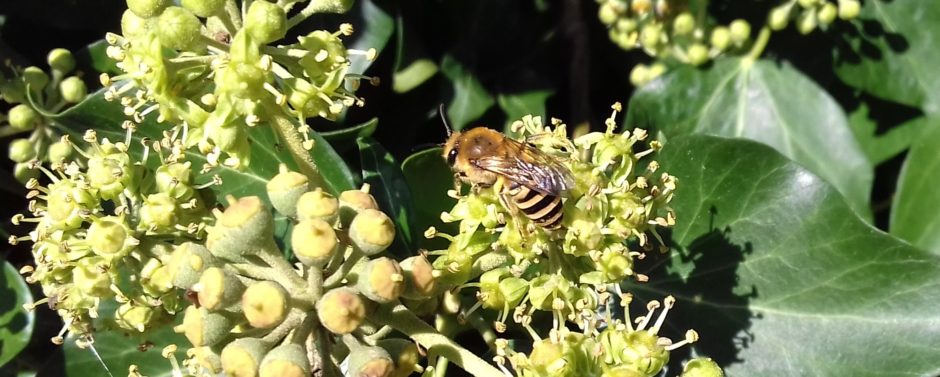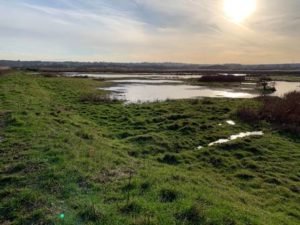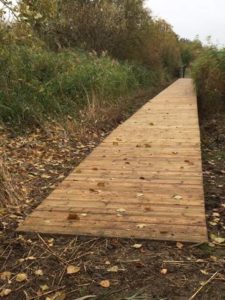CROSSNESS UPDATE, DECEMBER 2019. From Karen Sutton, Reserve Manager .
Dear Friends of Crossness Nature Reserve,
I hope you have enjoyed all that autumn offers at Crossness, and are now getting ready for those crisp, frosty, winter mornings, which can be really quite lovely on the reserve. I just wanted to provide an update of things that have been going on, and things that are due to take place at Crossness over the coming months. In particular, please be aware of significant footpath closures as detailed in the ‘Environment Agency works’ section below and the map included in this post. This could significantly impact visitors, so please do make yourself familiar with these plans which start next month.
Very rare plant species:
It has been discovered that Crossness is the only known location in Kent for the rare plant species Frog Rush (Juncus ranarius)! Recorded by botanist Rodney Burton in the West Paddock, Geoffrey Kitchener (Kent county recorder) has subsequently written the draft report (included in the post below) to go in the County rare species register. It details the fact that Frog Rush was recorded in Kent in 1862 in Deal, and later at Sandwich Bay in 1947 where a gathered specimen is now part of a collection in National Museum Wales.
Clearly this find is really rather special. A plant of damp brackish coastal habitats, typically on mud-flats and sand-flats above the high-water mark, at Crossness, Rodney recorded many patches at the edge of muddy depressions which are often water-filled. The report states that the bare/open ground maintained by the West Paddock’s water levels and grazing regime (and subsequent trampling by horses) seems to be favourable to this species where bare soil is available for germination (the species is an annual).
The water levels in the West Paddock are primarily maintained by a wind pump which abstracts from the Great Breach Dyke. This will almost certainly help provide the elevated salinity which this plant appears to favour. The high water levels in winter certainly provide areas of bare ground in the spring and early summer, and the paddock is only lightly grazed by horses for three months of the year.
Being wind-powered, our water pumping regime is not always stable, and with the possibility of forthcoming development on Cory Field North and Cory Field South, in addition to the proposals for Cory’s Riverside Energy Park immediately north of the West Paddock, there are concerns that freshwater run-off from these developments could reduce the salinity required by species such as Frog Rush, as well as the saline-dependent red-list invertebrates in our ditch network.
Cory Riverside Energy Park proposal:
The hearing process – in which the Examining Authority on behalf of the Secretary of State examined the development proposals put forward by Cory Energy to build a second waste incinerator and ancillary buildings immediately adjacent Crossness Nature Reserve (north of the West Paddock, and east of Sea Wall Field) – drew to a close on Wednesday 9th October. There was an awful lot of work involved in fighting this proposal throughout the summer, and I owe a huge amount of gratitude to Ralph Todd particularly, who submitted written representations at various stages on behalf of the Friends of Crossness Nature Reserve. The Examiner is due to complete his report and provide his recommendation to grant or deny the application by 9th January 2020, at which time it will go to the Secretary of State for a final decision. It might be some time before we hear the final outcome, but I will keep you updated.
IMPORTANT footpath closures/Environment Agency works:
Following my previous communication regarding the Environment Agency’s preliminary works in early November, I am now in receipt of more detailed proposals coming up which will have a greater impact on visitors to Crossness Nature Reserve than first envisaged.
Unfortunately, a considerable stretch of the Thames Path – between the former Thamesview Golf Course to the west, and Cory’s waste incinerator in Belvedere to the east – will remain closed for up to six months, starting January 2020, and will not be open at weekends as previously thought.
Additionally, the EA’s contractors have applied for a closure of the footpath (Public Footpath 2) that runs north from our Protected Area gates, past the Great Breach Pumping Station, and up to the Thames Path. I include here the footpath diversion that they are putting in place, which appears to be a 57 minute route down to Yarnton Way and then up Norman Road to the back of Cory’s ‘Riverside Resource Recovery Facility’.
This urgent work is required in order to desilt the gravity outfall culverts and chamber, and to install a new penstock, but it does mean that there will be no access to the foreshore from Crossness Nature Reserve, and no access to the reserve from the Thames Path for the duration of this project. This is going to be a massive blow for visitors during an important period for wetland bird viewing, and I can only apologise in advance. Due to silt being tankered away off site, there will also be a lot of vehicle movement between the work area in Sea Wall Field/Thames Path and the Norman Road gates, during January and February. If the schedule doesn’t slip, vehicle movement beyond that will reduce, but this will have an impact on what we can offer in terms of winter events and volunteer days on the nature reserve due to health and safety implications.
Diversion map from the EA included in post (below).
Enhancements and work coming up:
Recent visitors to Crossness may have noticed that the bird hide exterior has been cleaned-up and painted, and that there is a new boardwalk replacing the stepping stones on Crossness Southern Marsh as you approach Bridge Meadow from the west (image below). Some new reptile hibernacula and log piles have also been created at the bottom of the Protected Area.
Work coming up includes surfacing our circular path at the bottom of the Protected Area, and resurfacing the section of Footpath 2 that runs south from the Protected Area gates to the kissing gates. A footpath diversion is having to be sought from the London Borough of Bexley for the latter, so timing of the works will be governed by this as well as contractor availability. I will keep you updated with regard to timings. The mini-beast area is also due to have the chestnut paling removed, and a funky new fence installed, possibly before Christmas.
Anti-social behaviour:
We have been having some trouble with anti-social behaviour on Crossness Southern Marsh from the adjacent Southmere Park and Southmere Green. Recent visitors may have seen the fence damage on the southern boundary but we are aware of this and will be getting this repaired. I would also like to ask visitors to the southern marsh to take extra special care when accessing the southern kissing gate from the adjacent Peabody Land as it is incredibly muddy and slippery at the moment.
Wildlife:
Our volunteer, Roger, has been hard at work collating all your wildlife records for the reserve and southern marsh. There is a lot of work involved in this, but the culmination of all that data input, is the tables (in the post, below) showing maximum count and monthly totals for both quarter 2 (Apr-Jun) and quarter 3 (Jul-Sept). These records include some great sightings, including the Great Reed Warbler from earlier this year, our first Small Heath butterfly, the first ‘modern’ Frog Rush record in Kent, lots of Barn Owl activity, and some rather rare invertebrates, including Shrill Carder Bee. Please do take a look, and thank you to all of you that contribute your sightings – these records are invaluable, thank you.
I will no doubt be in touch again soon with updates, but I just wanted to take this opportunity to wish everybody a wonderful Christmas and all the very best for the New Year.
With very best wishes
Karen Sutton, Crossness Nature Reserve Manager


